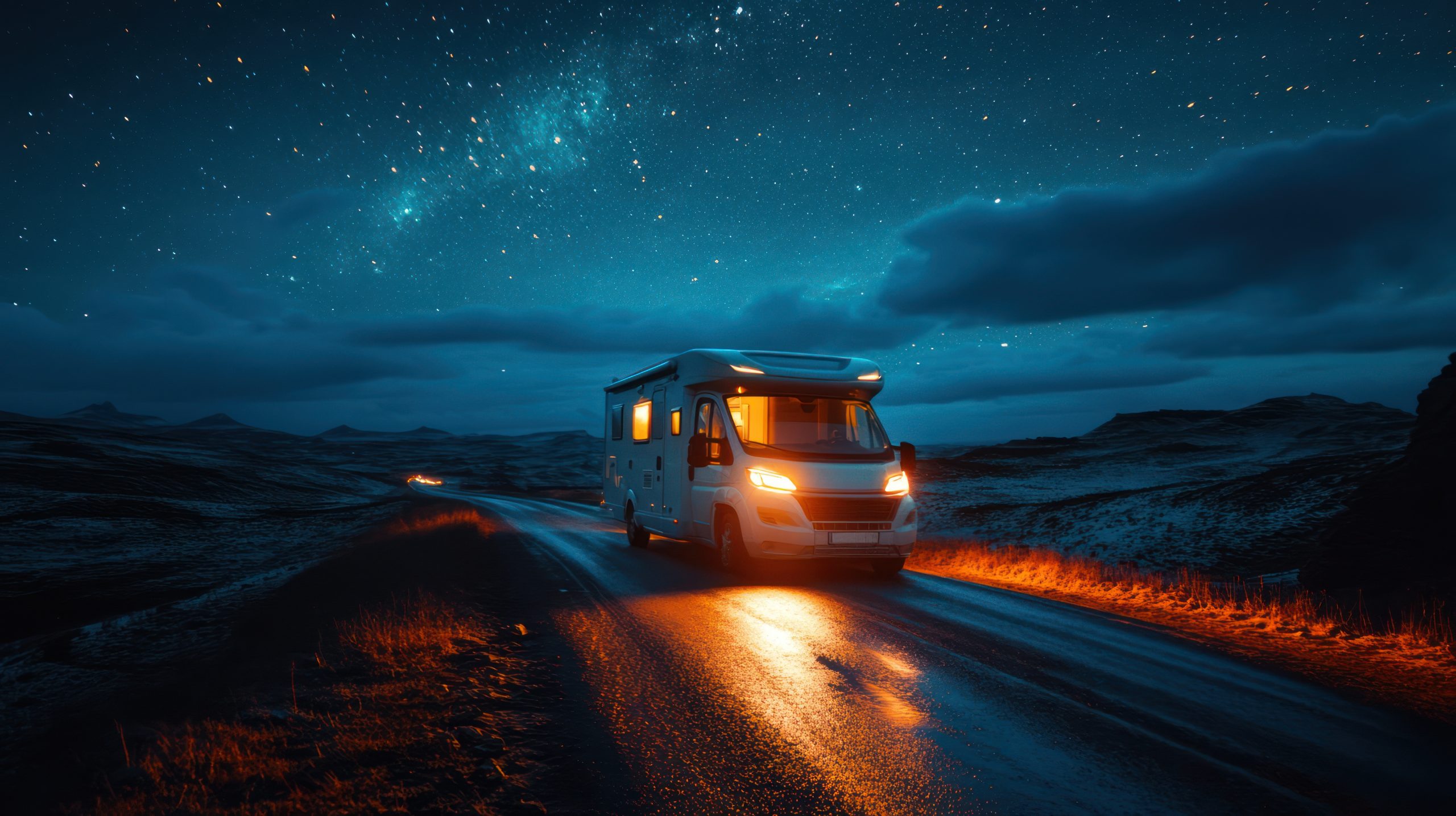While many RVers prefer to hit the road during daylight hours, night driving is sometimes unavoidable. Unfortunately, driving at night comes with increased risks—reduced visibility, slower reaction times, and a higher likelihood of encountering fatigue or impaired drivers.
RV headlights, particularly high beams, can help improve visibility on dark roads, but they must be used correctly to avoid creating hazards for others.
Because RVs sit higher off the ground, their headlights—especially high beams—can cause more glare for other drivers. That’s why understanding the safe and appropriate use of RV headlights is key to responsible RV driving.
The Benefits of High Beams for RV Drivers
High-beam headlights are designed to shine farther and brighter than standard low beams—often illuminating up to 400 feet ahead. For RV drivers navigating rural roads, long stretches of highway, or dimly lit areas, high beams can offer critical visibility to help spot hazards like wildlife, fallen branches, or sharp curves.
Using high beams strategically gives RVers more time to respond to changing road conditions, an especially important advantage given the larger size and longer stopping distances of most recreational vehicles.
When to Avoid High Beam Use
Even with their advantages, high beams can quickly become dangerous if used at the wrong time. Every RV owner should follow these RV driving safety guidelines:
- Dim your lights for oncoming traffic. When another vehicle is approaching within about 500 feet—or if you’re following a vehicle within 200–300 feet—switch to low beams. The elevated position of RV headlights increases glare, which can temporarily blind other drivers.
- Don’t use high beams in poor weather. In rain, fog, or snow, high beams often make visibility worse by reflecting light off water droplets, creating a blinding “white wall” effect.
- Be mindful in urban areas. On city streets or well-lit roads, high beams typically aren’t necessary and can create more harm than help by distracting other drivers and pedestrians.
- Know your tech. If your RV is equipped with automatic high-beam features, monitor them closely. While convenient, these systems don’t always adapt perfectly to every scenario—it’s still your responsibility to ensure safe use.
Best Practices for Using RV Headlights Safely
To stay safe and considerate while traveling at night, follow these simple RV driving safety tips:
- Only use high beams when driving on dark, open roads without surrounding traffic
- Always dim headlights when another vehicle approaches or is ahead of you
- Keep your headlights clean and properly aligned to reduce unwanted glare
- Don’t rely solely on automation—adjust your lighting manually as needed
- Inspect your headlight performance as part of routine RV maintenance, especially before long trips
RV Headlights: Stay Safe and Covered on the Road
Your RV headlights are one of your most important safety tools when driving at night. Used properly, they enhance visibility and protect both you and others on the road. But with that power comes responsibility—being a safe and respectful RV driver means knowing when to switch beams and how to handle changing road conditions.
At Happy Camper Insurance, we’re here to support your journey every mile of the way. From RV headlights to full coverage for your vehicle and travels, we help protect your rig, your gear, and your green adventures—day or night.
Have questions about RV driving safety or insurance coverage? Contact us today and let Happy Camper Insurance help you stay protected on every road ahead.



